When Duke lost at home to North Carolina at the beginning of February, the conventional wisdom held that the Blue Devils were finished. Any true believers who thought otherwise were then further tested when Mike Krzyzewski’s team proceeded to lose its next game, at Notre Dame.
Duke hasn’t lost since. The Blue Devils have posted victories at NC State, at Wake Forest and, most crucially, at home against Virginia and now Syracuse.
This sudden turn of fortune for what was previously a 7-8 team has brought Coach K’s program at least within shouting distance of a 25th consecutive NCAA tournament bid. To be sure, Duke is, by no means, there yet, at least not if Joe Lunardi is correct. (Joe Lunardi is very often correct.)
Still, the Blue Devils have clearly improved their position with the victories over the Cavaliers and the Orange. Where once Duke’s name was entirely absent from the discussion, now the team graces a good many “next four out” and even “first four out” lists.
During this four-game streak of winning basketball, the Blue Devils have played 152 of their 160 minutes without Jalen Johnson on the floor. A projected 2021 lottery pick, Johnson announced his decision to opt out of the rest of the season after playing eight minutes against the Wolfpack.
This coincidence in timing between Johnson’s change in status and Duke’s even more dramatic change in status moved Jim Boeheim to state that the Blue Devils were playing better without the freshman. We can never know what Duke would have looked like with Johnson these past three games, but what we do know is that the 7-8 version of Duke was significantly better on a per-possession basis than its record implied.
That previous version of the Blue Devils simply lost a bunch of close games. Now they’ve started winning them along with an occasional double-digit victory like the one over the Orange. The onetime NCAA tournament afterthought has become today’s bubble team on the rise.
As always, the NCAA men’s basketball committee will have the final say in this matter. The rest of us can only compare profiles and review precedents. But, at a minimum, Duke is closer to playing in the 2021 NCAA tournament than anyone thought possible when this was just another sub-.500 team.
Here’s our current projection of the bubble:
Bids from traditional one-bid leagues (minus the Ivy): 20 teams
Locks: 14 teams
The bubble: 44 teams for 34 available spots
Should be in: 22 teams
Work to do: 22 teams
ACC | Big 12 | Big East | Big Ten | Pac-12 | SEC | American | Others
ACC
Locks: Virginia, Florida State
Should be in

Despite a relatively modest scoring margin in ACC play, the Hokies are cruising toward a no-drama bid in the middle of the bracket. How has Mike Young‘s team worked this magic? The overtime win against Villanova on a neutral floor in November helps, as does a 5-1 record in conference games decided by seven points or fewer. Virginia Tech’s defense forces a fair share of misses at the rim and does a good job limiting opponents to one shot. Meanwhile, Keve Aluma has hit 63% of his 2s and recorded three double-doubles over his last four outings.

Meet the mercurial Tigers, clinging to “Should be in” status despite a track record that has included both peaks and valleys. On the one hand, Clemson has recorded victories by eight points or more against a veritable who’s who of tournament-track opponents, namely, Purdue, Alabama and Florida State. On the other hand, the Tigers have also been ground into a fine powder by Virginia (lost by 35), Georgia Tech (defeated by 18), Duke (drubbed by 26) and the aforementioned Seminoles (downed by 19). Add it all up and you have a respectable NET ranking, yes, but also a projected No. 8 seed that could elicit howls of skepticism from several reputable laptops next month.
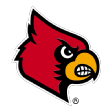
For weeks, Louisville has carried a No. 8 seed in mock brackets, a position Bubble Watch was on the record as viewing as a “placeholder” seed. Now that Chris Mack’s team has returned from its COVID-19 pause, we still don’t know quite what to make of this team. The Cards were buried 99-54 by North Carolina in Chapel Hill. This is still a profile that features wins over Virginia Tech and Seton Hall. The NET ranking was, before the shellacking at UNC, nestled in the top 35. But Louisville has now lost four of its past six, and its upcoming home game against Notre Dame has taken on added importance. Maybe the game against the Tar Heels was just a one-time outlier for a team returning from hiatus. A win against the Fighting Irish would support that theory.
Work to do
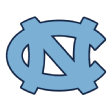
When the Tar Heels are pushing the pace and crashing the offensive glass, the results can be spectacular. That sentence has been true throughout Roy Williams’ tenure in Chapel Hill, and it applied once again in UNC’s 45-point win at home over Louisville. The Cardinals were returning from a COVID-19 pause, and this was not the strongest version of the Cardinals that opponents have faced or will face this season. Nevertheless, North Carolina accelerated the Cards into the fastest game they had played this season. Day’Ron Sharpe alone recorded eight offensive rebounds, and as a team, the Tar Heels pulled down 47% of their missed shots. It was, to say the least, a significant victory for a team being projected as a No. 11 seed.

How many more wins do the Blue Devils need in order to earn an at-large bid? While the victory over Syracuse was compelling due to the “play-out game” nature of the contest, it is still, in profile terms, a Quad 2 win over an opponent unlikely to reach the NCAA tournament. Meaning there’s still work to be done in Durham, starting with a victory in the upcoming home game against Louisville. Coach K’s team has games remaining not only against the Cardinals but also on the road at Georgia Tech and North Carolina. Both road dates will present Quad 1 opportunities, and a tournament hopeful with a NET ranking in the 50s, even one named Duke, could really use both of those wins on its profile. Alternately, the Blue Devils could pick up a Quad 1 victory or two in the ACC tournament, but two more of them would be advisable.

While Syracuse could theoretically earn an at-large bid, Boeheim’s men are closing in on the last desperate scenario embraced by die-hard fans. (We are all die-hard fans at Bubble Watch HQ. Salute.) These are the true believers who respond to every dire bubble situation with, “Yes, but what if my team wins out and loses in the tournament title game?” If Syracuse wins out, posts a 9-6 record in conference play and loses in the ACC title game, you’ll be looking at a profile that added its first Quad 1 win of the season at Georgia Tech and then, most likely, recorded one or two more at the ACC tournament. Possibly that would be enough. Barely. Win out, Orange.

Big 12
Locks: Baylor, Oklahoma, West Virginia
Should be in

Texas had a 19-point cushion early in the second half against West Virginia. Then the cushion went away. A confrontation between Courtney Ramey and Andrew Jones during a timeout seemed to mark a turning point of sorts, and the Longhorns lost 84-82 in Austin. Shaka Smart’s team has dropped five of its past eight, and the danger is that the gradual slide in UT’s projected seed that’s been evident throughout February could continue. At the beginning of the month, the Longhorns were seen as a No. 2 seed. That expectation has now dropped to the No. 4 line.

The Red Raiders have dropped two straight, and, while there’s no shame in losing to West Virginia and Kansas, this offense looks rather listless. Texas Tech managed to score just 132 points in 133 possessions in the two defeats, and in conference play Chris Beard’s team is making fewer than 48% of its 2s. Naturally, the Big 12 offers few easy games, and the challenges will continue for the Red Raiders. Games remain to be played at Oklahoma State and at home against Texas. This is a team that has envisioned as a No. 5 seed, and that could well turn out to be the case with a profile featuring wins over LSU and Texas and a season sweep of Oklahoma.
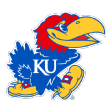
You don’t want to play this defense right now. The Jayhawks are on a roll on that side of the ball, and, in fact, Bill Self’s team has held five straight opponents under a point per possession. Granted, that run included three games against Iowa State (home and away) and Kansas State. Still, KU’s performance across the entire Big 12 season now looks outstanding. No one is catching Baylor for “best defense in the league” honors, of course, but Kansas has held its conference opponents to just 0.95 points per possession. The Jayhawks are earmarked for a spot on the No. 5 line in mock brackets and might be heading for an even higher seed.

Technically, Oklahoma State is ineligible for the postseason. The Cowboys have appealed that ruling with the NCAA, however, and as long as the appeal is pending, OSU is permitted to play its way into the tournament. Which is exactly what the Cowboys are doing: Cade Cunningham is the Big 12’s leading scorer en route, one presumes, to being the No. 1 overall pick or close to it in the 2021 NBA draft. As a projected No. 7 seed, Mike Boynton’s team excels at forcing misses on defense and exhibits an extreme (if fast-paced) interior orientation on offense. Oklahoma State loves to get to the line.

Big East
Locks: Villanova
Should be in
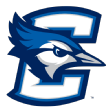
Marcus Zegarowski lived up to his billing as the preseason Big East player of the year and scored 25 points as the Bluejays buried Villanova 86-70 in Omaha. In converting 71% of its 2s and 46% of its 3s (on 12-of-26 shooting from beyond the arc), Creighton offered a repeat performance of the same dazzling accuracy it achieved in an 89-53 win over Seton Hall in January. Clearly, CU’s offense can explode at any time, and a big win over a tournament lock has the potential to boost the No. 6 seed Creighton had been showing in mock brackets. If and when that happens, though, be sure to give equal credit to the Greg McDermott’s defense. The Bluejays are neck-and-neck with UConn for the title of best D in Big East play.
Work to do

Challenged by multiple COVID-19 pauses, Xavier finds itself trying to perform well enough for its best win to matter. In December, the Musketeers hosted Oklahoma in Cincinnati and came away with a 99-77 win. Multiple interruptions followed, however, and Travis Steele’s team suffered consecutive losses to UConn (in a game in which James Bouknight did not play) and St. John’s. Now the Musketeers are 12-4 with a NET ranking around 50 and a projected No. 10 seed to their name. Steele’s team will be given one of the best profile-enhancing opportunities the Big East can offer when Creighton visits Xavier on senior night.

Prior to losing at Georgetown 81-75, the Pirates had spent February playing themselves out of bubble peril and all the way up to the relative safety of a projected spot on the No. 10 line. A Quad 2 loss to the Hoyas doesn’t necessarily undo all of that good work. Seton Hall might drop a seed line in mock brackets, but, regardless of seed, Kevin Willard’s team was always going to have to defend its spot head-to-head against the Big East’s other bubble teams. The Pirates will end their season with a home game against UConn and a road date at St. John’s. The Hall, the Huskies and the Johnnies are all fighting for bids, and it should be an intense series of bubble battles.

UConn’s eight-point loss at Villanova keeps the Huskies where they are for the time being. Where is that exactly? Good question. Purveyors of mock brackets are showing Dan Hurley’s group as either one of the very last teams in the field or one of the first ones out. The danger for the Huskies now is simply that the schedule isn’t necessarily brimming with chances for a team in this position to play its way comfortably into the field. UConn closes its season with two games against Georgetown, a home date against Marquette and a visit to Seton Hall. Obviously, a win on the road against the Pirates would be the most valuable prize, but will it be sufficient?

There’s likely some aphorism involving closed doors and opened windows that’s applicable to St. John’s current plight, and, make no mistake, it is a plight. The Red Storm lost at home 88-83 to DePaul, a Quad 4 defeat and the first such loss on the team’s profile this season. The NET ranking sported by Mike Anderson’s team was already dangerously low (in the high 60s), and falling to the Blue Demons will exacerbate this problem. It looks bleak for an 8-8 Big East team, and this is where the bit about opening a window comes in. St. John’s will play at Villanova in its next game. Win that and maybe a team with a season sweep of the Wildcats would still have a shot at a bid.

Big Ten
Locks: Michigan, Ohio State, Illinois, Iowa, Wisconsin
Should be in

In a season in which headlines in the Big Ten have been dominated by the likes of Michigan, Ohio State, Illinois and Iowa, the Boilermakers have quietly put themselves in position to earn a very good spot in the bracket in their own right. Matt Painter’s men have games remaining at Penn State and at home against Wisconsin and Indiana. If, for the sake of discussion, Purdue won out, you would be looking at a team that is 18-8 and 13-6 in the historically strong Big Ten. While the Boilermakers are currently seen as a likely No. 6 seed, a few more wins could change that number.

In the big picture, Rutgers is about to make its first NCAA tournament appearance in 30 years. (Though, of course, the Scarlet Knights would in all probability have received a bid had there been a tournament last year.) That’s why Steve Pikiell was hired, and he is delivering. He is also, however, wondering how to pump some life into an offense that has appeared rather listless in losses to Michigan and Maryland. In the course of those two defeats, Rutgers shot 24% on its 3s and scored just 123 points in 132 possessions. The Scarlet Knights are projected as a No. 7 seed, and if Pikiell finds the answers on offense, this group is capable of giving a No. 2 seed a game.
Work to do

Who says blue-chip programs are struggling in 2021? Michigan State looked like a regular Gonzaga in its 52-point second-half eruption at Indiana. The 78-71 loss suffered by the Hoosiers is not, by itself, fatal for the tournament hopes of a team previously projected as a No. 11 seed. The defeat does, however, represent a costly blown opportunity. Instead of one more win, Archie Miller’s team now has a second Quad 3 loss on its profile (the other being the win Northwestern posted in Bloomington). IU will wrap up its season with road games at Rutgers, MSU and Purdue and a home date against Michigan. As it stands now, the Hoosiers badly need a win in at least one of those games.

When the Terrapins were 10-10 and 4-9 in the Big Ten, we here at Bubble Watch HQ had to preface any remarks about the team with an explanation for why Mark Turgeon’s group was still here in the first place. No need for disclaimers anymore. Maryland has won four straight, including wins over Minnesota and on the road at Rutgers. Now you’re looking at a 14-10 and 8-9 team with a top-35 NET ranking and an embarrassment of riches in the “good win” column (at Illinois, at Wisconsin, at Rutgers, at home against Purdue and the season sweep of the Golden Gophers). Purveyors of mock brackets have taken note, and the Terps are commonly shown as one of the last teams in the field.
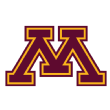
Minnesota’s position has grown more precarious. Joe Lunardi, an official Friend of Bubble Watch, dropped the team all the way down to the last spot in the field in the wake of the Golden Gophers’ 94-63 loss at home to Illinois. Richard Pitino’s team is still yet to win a game this season on an opponent’s home floor. For a time, this fact was balanced by the stellar roster of opponents who have lost at Williams Arena: Michigan, Ohio State, Iowa, Purdue and Saint Louis, among others. But the Gophers are 13-10, 6-10 in the Big Ten and carrying a NET ranking that could drop into the 60s. It all feels precarious, but Minnesota can turn things around with a sufficient number of wins against Northwestern and Rutgers at home and against Nebraska and Penn State on the road.

Pac-12
Should be in

On the very cusp of being classified as a lock, USC saw its seven-game win streak come to an end in an 81-72 loss at home to Arizona. It was an impressive performance by the young Wildcats, and, by the same token, it is by no means the end of the world for the Trojans. Andy Enfield’s group still has an upwardly mobile move to “lock” territory in its near future, Evan Mobley is still having a Pac-12 player of the year-level season, and, indeed, he scored 23 points and recorded four blocks in a losing effort against Arizona. Nevertheless, the road doesn’t get any easier for USC. Its next games will be at Colorado and at Utah.

After losses on the road to Cal and to Oregon, the Buffaloes saw their expected seed drop just one line in the mock brackets. What was once a No. 6 seed became a spot on the No. 7 line, and that is likely where Colorado will stay after its four-point win at Oregon State. Now it’s time for the main event, not only for CU but, kind of, for the entire conference. For the balance of the Bubble Watch season, the “Should be in” section of the Pac-12 has included three teams: USC, UCLA and Colorado. Over the final weekend of the regular season, Tad Boyle’s team will host first the Trojans and then the Bruins in Boulder.

As a projected No. 9 seed with a 16-5 record, Mick Cronin’s team finds itself entirely reliant on Pac-12 teams other than USC to define just how good UCLA’s “good wins” really are. The Bruins lost to both Ohio State and San Diego State, leaving a three-point win at home over Colorado as far and away the highlight of this profile. Phrased less charitably, that game marks the Bruins’ only win against an at-large-caliber opponent. UCLA will have an opportunity to change this state of affairs when it closes the season with games against the Buffaloes and Trojans.

With five straight wins and, most crucially, a 60-56 victory at home over Colorado in its pocket, Oregon has continued to solidify its projected No. 9 seed in the field of 68. Defeating the Buffaloes ranks alongside wins over Seton Hall and Stanford as this team’s most important wins of the season. Chris Duarte has hit shots from both sides of the arc all season long, the senior has posted the Pac-12’s highest steal rate and the Ducks as a team excel at forcing opposing offenses into turnovers. The only potential cloud on this horizon is the schedule. Dana Altman’s group is slated to finish the season with four road games.
Work to do

After an epic 85-76 loss in three overtimes at Washington State, the Cardinal are 14-9 and 10-7 in the Pac-12. At tipoff against the Cougars, Jerod Haase’s group was being projected variously as just in or just outside of the field. By itself, a Quad 2 defeat on the road might not alter Stanford’s position in the bracket as much as all the wins and losses being recorded by all the other bubble teams. In any event, the Cardinal still have games to play at home against Oregon and Oregon State. Though Stanford has struggled at times this season with both a high turnover rate and a low offensive rebound percentage, this team might yet play its way into the field if it gives itself enough chances to score.

SEC
Locks: Alabama
Should be in

Apparently, the Volunteers very much enjoy having their blurb appear down here in “Should be in” at Bubble Watch. By any reasonable standard, a projected No. 4 seed with wins over Kansas, Arkansas, Missouri and Colorado should be a lock by now. Instead, Kentucky hammered Tennessee 70-55 in Knoxville, and so the Vols will cool their heels down here among the non-locks for a bit longer. You have to give it to Rick Barnes’ men — they’re compelling in an erratic sort of way. Since whipping Vanderbilt at home in mid-January, Tennessee has posted a 5-5 record.

Within a span of just four days, Cuonzo Martin’s team saw its projected position in the field fall two full seed lines, from a No. 4 to a No. 6 seed. That slide will be halted for the time being by the Tigers’ easy 93-78 win at South Carolina. Seeing action for the first time after missing his team’s losses to Arkansas and Georgia, Jeremiah Tilmon came off the bench and shared leading scorer honors with Dru Smith at 17 points. The Tigers now have an opportunity to lock down their spot as a middle seed with home games against Ole Miss and Texas A&M and a visit to Florida in the season finale.
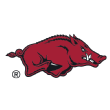
Winners of seven straight SEC games, the Razorbacks are riding high. A team that was in danger of dropping out of the projected field a month ago is now seen as a likely No. 8 seed. In his second season in Fayetteville, Eric Musselman has Arkansas playing the kind of defense that was so familiar to Nevada’s opponents in the Mountain West during the coach’s tenure there. The Hogs limit opponents to one shot and force a fair number of turnovers. Musselman’s team has a chance to earn the program its highest seed since Bobby Portis and Michael Qualls entered the 2015 tournament on the No. 5 line.
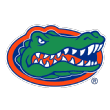
Mike White’s team appears to have again found its footing after recording a seven-point win at home over Georgia. It was a welcome turn of events for a group with fresh memories of returning from a COVID-19 pause only to lose by 11 at Arkansas. UF is showing up in mock brackets as a No. 8 seed, one that hits its 2s and does an excellent job limiting the number of 3-point attempts recorded by opponents. The Gators still have road dates to play at Auburn and Kentucky before returning home for the season finale against Missouri.

With the way Alabama, Arkansas and now LSU are playing, the SEC is making a persuasive case that it’s a clear No. 3 nationally, not far behind the Big Ten and Big 12, in terms of conference strength. The Tigers have done their part to enhance the league’s reputation by winning three in a row and posting an average margin of victory in those games that clocks in at exactly 17 points. Cameron Thomas powered his team past Auburn with 27 points, and LSU has risen all the way to a No. 8 seed in mock brackets.
Work to do
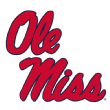
Sometimes the bubble presents itself in stark clarity. This is one such time: Ole Miss needs to win its next game, at Missouri, to stick around here at Bubble Watch. After losing at home by 10 to Mississippi State, the Rebels are 12-9 and 7-7 in the SEC. The wins over Tennessee and Missouri got this team in the discussion, but more victories are now needed to stay there. While this is a good defensive team, Ole Miss has shot just 27.6% on its 3s in SEC play.

American
Locks: Houston
Work to do

With 40 minutes of basketball, the Shockers launched themselves from perhaps the third or fourth team under “Next four out” to quite possibly the middle of the action in “First four out.” A five-point win at home over a projected No. 2 seed like Houston will have that kind of impact. To be sure, Wichita State will have to work to keep its spot on the bubble. Two games remain to be played against SMU, and Isaac Brown’s team will finish the season with road games at Tulane and Temple. But, at 13-4 and with a win over the Cougars to their credit, the Shockers are now close enough to a bid to taste it. Well done, Coach Brown.

Maybe someday in the far off future the committee will be replaced entirely by a metric that measures how difficult it would be to duplicate any team’s wins and losses given the opponents and venues where that record was compiled. When that happens and “strength of record” (SOR), “wins above bubble” (WAB) or something similar is in the driver’s seat, it will be good news for SMU. In a SOR world, the 11-4 Mustangs would be a No. 10 seed. In the real world, however, Tim Jankovich’s men rank in the high 50s on the NET and inhabit the far outer fringes of the bubble. Keep winning, SMU.

Others
Locks: Gonzaga
Should be in

Barring unforeseen mishaps, BYU appears well on its way to enjoying the least stressful Selection Sunday of any West Coast Conference at-large aspirant not named “Gonzaga” since Saint Mary’s in 2017. (Though, to be sure, both the Cougars and the Gaels likely would have had drama-free Selection Sundays last March if there had been one.) Mark Pope’s team is looking like a potential No. 8 seed, with road wins at San Diego State and Utah State and a neutral-floor victory over St. John’s to its credit.

Congratulations to the Ramblers, winners of a close game for the first time all season. Prior a victory at home over Valparaiso by the score of 54-52, Loyola Chicago was 0-3 in games decided by five points or less. Porter Moser’s team still has two more home games to play, both against Southern Illinois. With their top-10 NET ranking and 19-4 record, the Ramblers are well on their way to the No. 9 seed they’re currently earning in mock brackets.

Not only are all of San Diego’s State’s losses “good,” Brian Dutcher’s men haven’t lost a game of any kind now in over a month. Setbacks to BYU, Colorado State and Utah State (twice, with both games played in Logan, Utah) are offset on the Aztecs’ profile by a season-opening win over UCLA and 16 other victories. This body of work has netted SDSU a No. 9 seed in mock brackets, a position that could be improved thanks to a season-ending two-game series against Boise State that will be played in San Diego.
Work to do

It’s fair to say things have taken a rather dramatic turn for the worse at VCU. First, allow Bubble Watch to extend best wishes to Bones Hyland, the Rams’ leading scorer and a potential Atlantic 10 Player of the Year. Hyland was carried from the court in the final minutes of regulation against George Mason in Richmond after he appeared to injure his left foot. He did not return, and VCU lost to the Patriots 79-76 in overtime. The Rams entered the contest being shown as a No. 10 seed, but the Quad 3 loss could drop the team’s previously spotless top-35 NET ranking into the same area where the A-10’s other bubble hopefuls reside. The tournament picture for Mike Rhoades’ team has grown cloudier after the past 45 minutes of basketball.

A two-game sweep over Utah State in Boise has enhanced a profile that was already landing the Broncos in mock brackets as a projected No. 11 seed. Leon Rice’s team now owns the back-to-back wins over the Aggies, as well as victories against BYU and Colorado State. BSU will end its season with a two-game set at San Diego State, and even one win there would figure to put the Broncos in a position of profile strength heading into the Mountain West tournament. Derrick Alston Jr. rang up 49 points in the two games against the Aggies and powers an offense that ranks No. 1 in the league in MWC play.

After beginning the season 18-0, Drake is poised to reach Selection Sunday with an exceedingly small number of losses. The 22-2 Bulldogs split their two-game series with Loyola Chicago in Des Moines and are seen as a likely No. 11 seed. Darian DeVries’ team will end its season with a home date against Evansville and with a two-game set at Bradley. For their part, the Purple Aces have already seen enough of Drake reserve Joseph Yesufu. The sophomore hit five 3s and scored 32 points in just 26 minutes in the Bulldogs’ 85-71 win over Evansville.

Few bubble teams have a profile more skewed toward conference play than the Bonnies, who played just two nonconference opponents (Akron and Hofstra) due to an early-season COVID-19 pause. The good news for Mark Schmidt and his men is that St. Bonaventure has been excellent in Atlantic 10 play, combining tough defense with a heavy dose of offensive rebounding. For now, mock brackets envision a No. 12 seed for a team with a NET ranking in the 40s and a nice winning percentage across a limited number of games. If the Bonnies can win on the road against Davidson, remaining home games against George Washington and Dayton will give Schmidt’s men a shot at posting a 14-3 record in the regular season.

In the crowded bubble confines of the Mountain West, Colorado State has gone 1-1 against all three of the league’s other at-large hopefuls: Boise State, San Diego State and Utah State. So far, that track record and a NET ranking in the 40s has been sufficient for the Rams to be rewarded with either a projected spot among the last teams in the field or one amid the first teams outside it. If nothing else, this is one of the most accurate shooting offenses in the country, and CSU’s making all those shots without a single senior in the rotation. But can Niko Medved’s men hold that position when their remaining MWC schedule includes no further Quad 1 opportunities? We’re about to find out.

The good news for the Billikens is that they still have a workable if challenging path to an at-large bid even though they were swept by Dayton in the season series. SLU’s lofty NET ranking (in the low 30s before recording the second loss to UD) and the team’s wins over St. Bonaventure and especially LSU give this profile enough strength to place the Billikens among the first teams out of the field. But Travis Ford’s men will now have to play their way into the bracket with, ideally, three wins in games still to be played at VCU and at home against Richmond and UMass.

At 12-5 and 5-3 in the Atlantic 10, Richmond is confronting the possibility that its shortened and interrupted regular season might not give the team enough runway to punch a ticket for an at-large bid. Among the Spiders’ remaining scheduled opportunities, only the road game at Saint Louis holds the promise of significantly improving the team’s profile. Improvement is indeed required, for Richmond is landing on a good many “next four out” lists in various bracket projections. The Spiders might still have work to do when they enter the revamped A-10 tournament.

The homestretch of Western Kentucky’s season has suddenly become way more interesting. The 15-4 Hilltoppers agreed to fill an open date for both programs by playing a road game at Houston on Feb. 25. To state the obvious, a win on the Cougars’ home floor would give a significant boost to a profile that already features a victory at Alabama. Rick Stansbury’s team is commonly shown in mock brackets as a No. 12 seed and, just as often, as Conference USA’s automatic qualifier. But could WKU earn an at-large bid with a NET ranking in the high 70s? A win at Houston would at one stroke improve the NET ranking and make a powerful statement to the committee.

